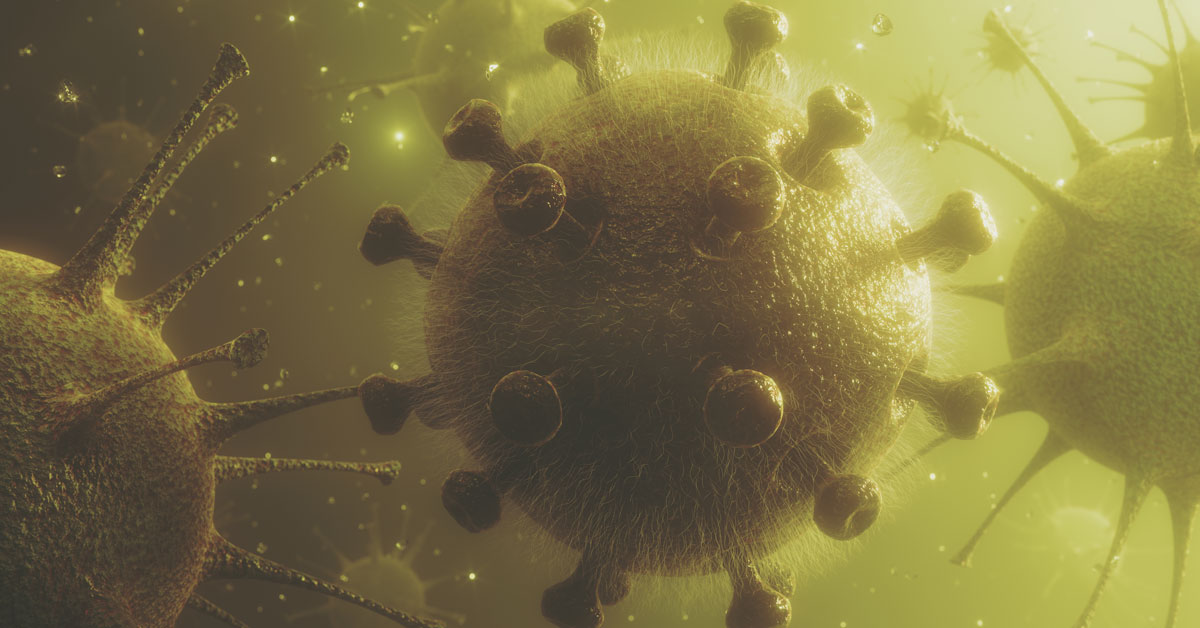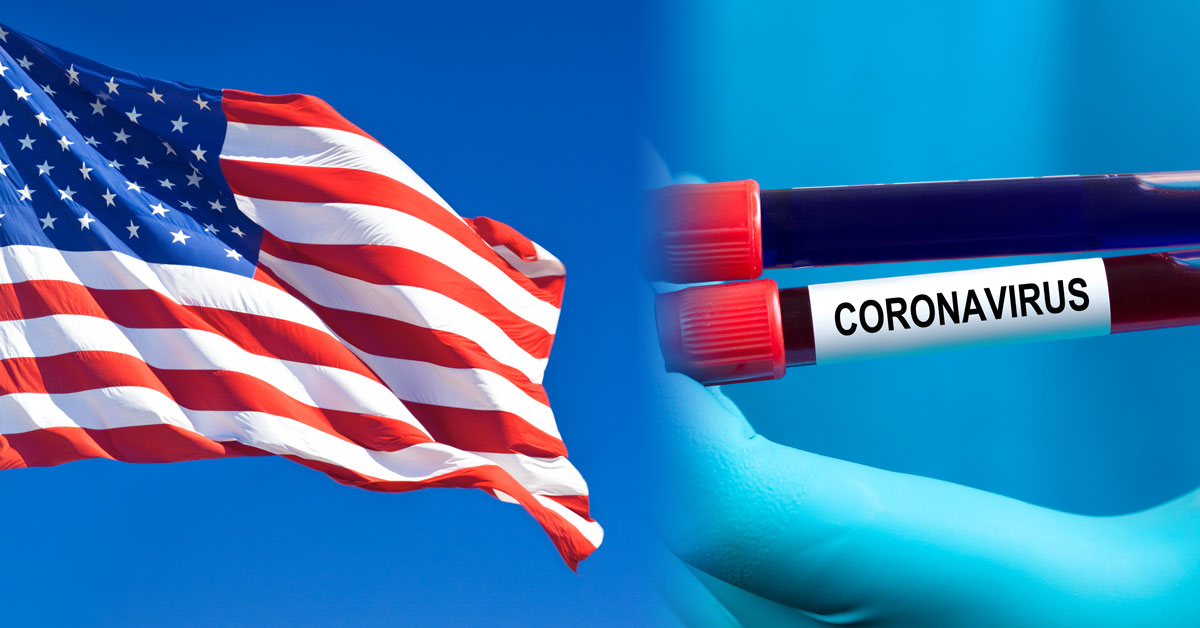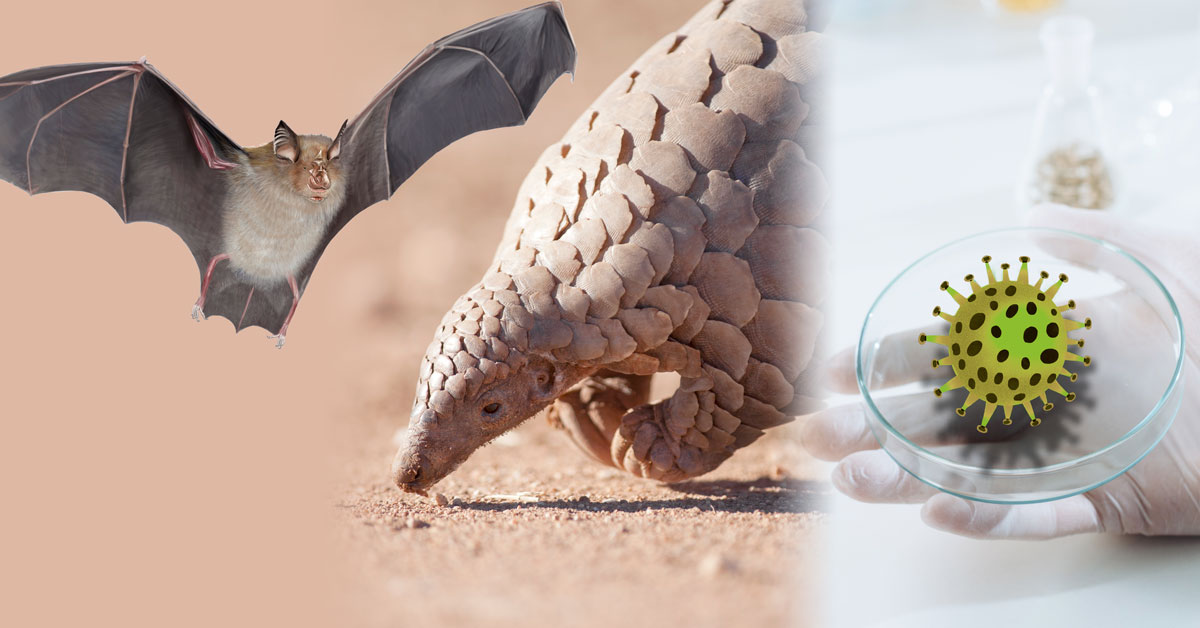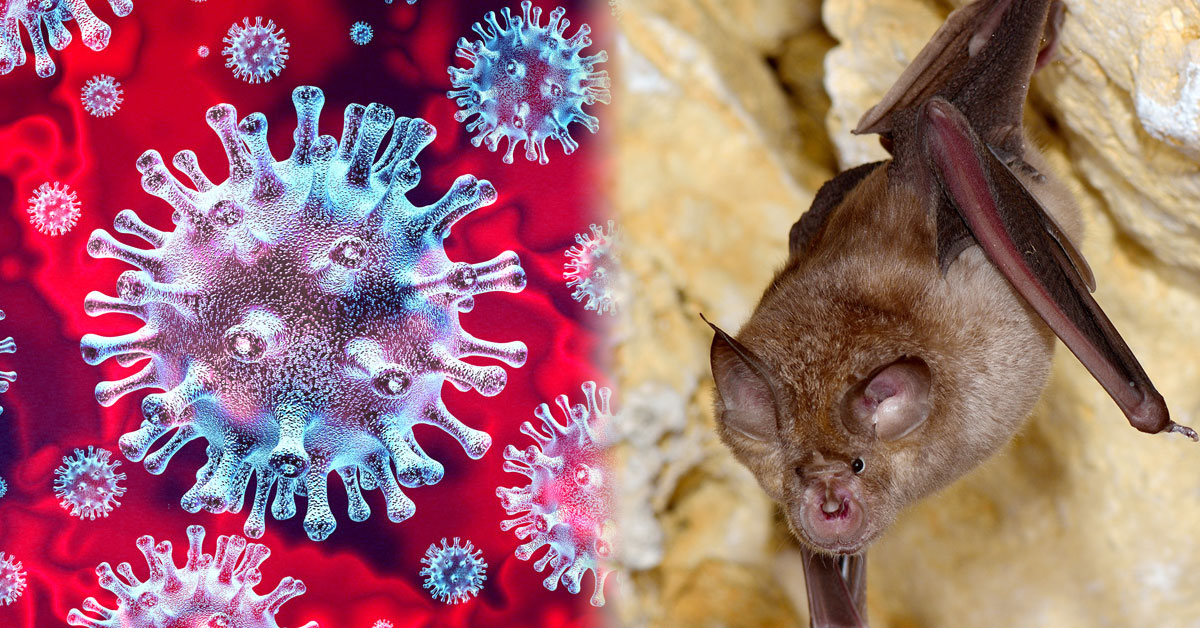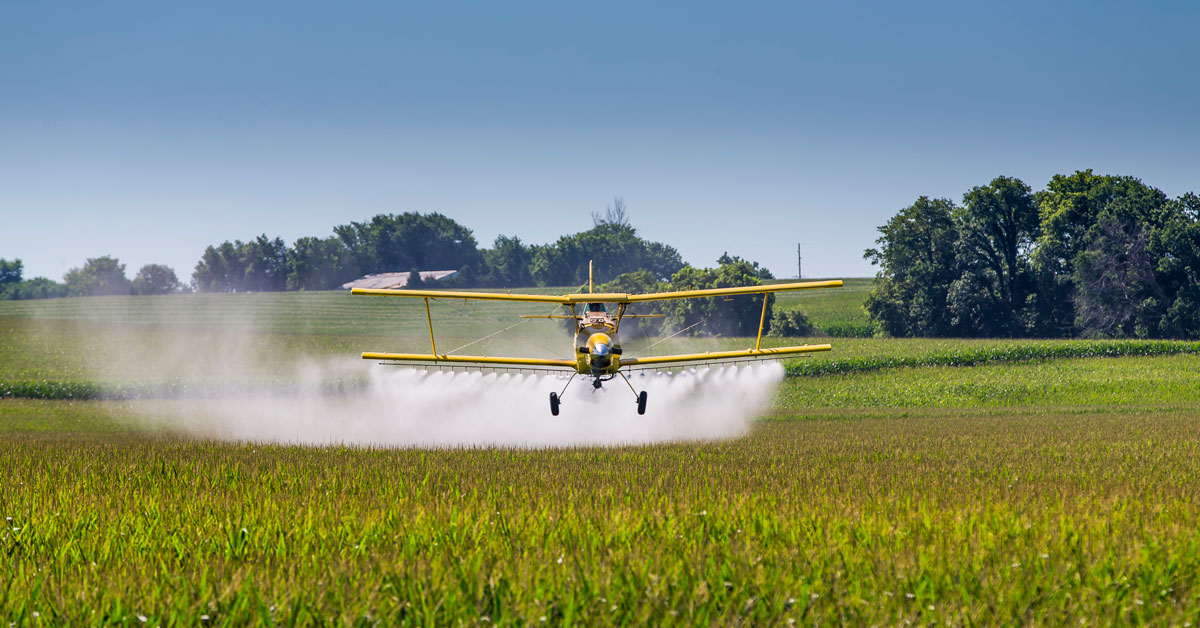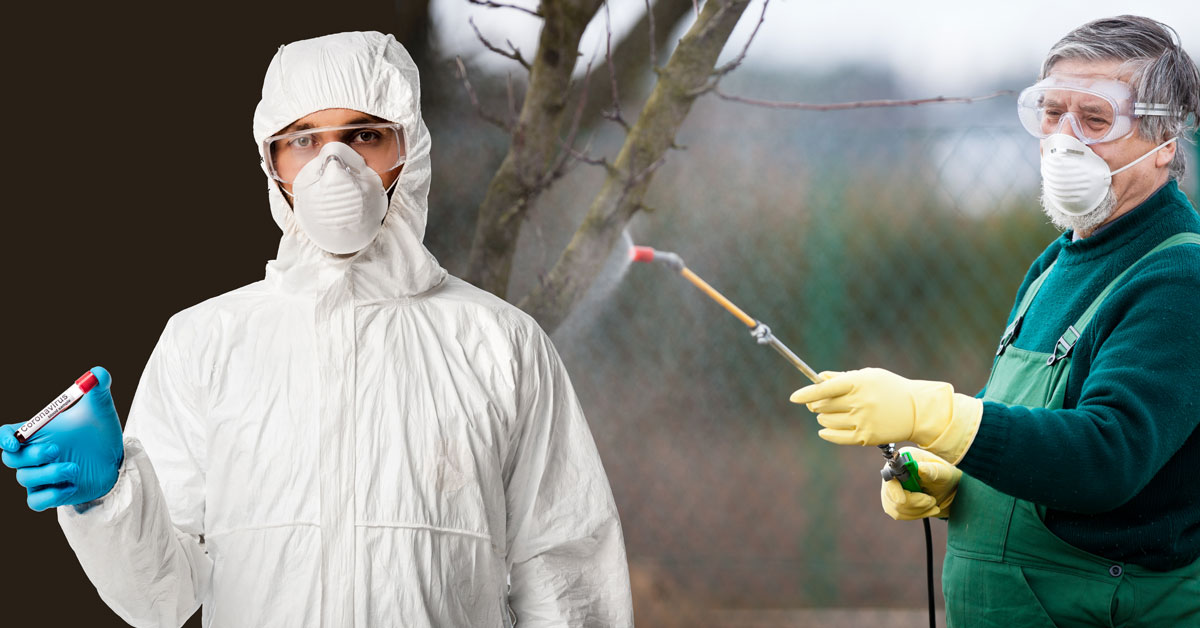COVID-19
Chinese and US scientists genetically engineered bat coronaviruses in dangerous gain-of-function research stretching back years
Chinese and US scientists have been collaborating for years in dangerous gain-of-function experiments that involve genetically engineering coronaviruses from bats and other animals, as revealed by a series of scientific publications. The coronaviruses are related to the SARS viruses that cause severe respiratory diseases in humans. The scientists were based at the Wuhan Institute of Virology (WIV) in China, the lab suspected by some of accidentally releasing the SARS-CoV-2 virus that caused the COVID-19 pandemic, and at the University of North Carolina (UNC) in the US.
SARS-CoV-2 could have escaped from a lab – and the US is in the frame
Media coverage of the SARS-CoV-2 virus’s origins is increasingly focusing on the possibility of an accidental escape from one of two candidate laboratories in Wuhan, China. Both are known to have been working on the bat coronaviruses that are closely related to SARS-CoV-2. But while many media outlets are whipping up fury over the alleged culpability of China, few mention that the dangerous research that could have led to the virus escaping was largely funded by the US. Furthermore, that funding itself had its roots in major safety lapses in US labs, involving deadly infectious diseases.
Summary of evidence that SARS-CoV-2 emerged from a lab
A summary of evidence suggesting the virus responsible for the COVID-19 pandemic may have originated in laboratory in Wuhan, China, has been published by “an anonymous group of researchers” who claim not to be “affiliated with any company, nation state, or organization”. The document focuses on evidence implicating two potential culprits: the Wuhan Center for Disease Control and Prevention (CDC) and the Wuhan Institute of Virology (WIV). Both are known to have been working on bat coronaviruses that are closely related to SARS-CoV-2. Note: This report omits the US involvement in the dangerous Wuhan research.
Did the pandemic begin in a lab? – Video interviews with experts
Dr Michael Antoniou was video-interviewed by Italian journalist Paolo Barnard for an upcoming documentary for the La7 TV Network about the possibility that SARS-CoV-2, the virus that caused the COVID-19 pandemic, may have escaped from a lab. Mr Barnard also interviewed Dr Simon Wain-Hobson, a virologist at the Pasteur Institute in Paris. Dr Wain-Hobson offers unnerving revelations about the history of virus gain-of-function research, which aims at making viruses more virulent or transmissible. Prof David Walt, a pathologist at Harvard, discusses the problems inherent in testing people for antibodies as a condition for allowing them back into society. Mr Barnard has posted the interviews on Youtube in advance of the documentary's broadcast in Italy, which is expected to be at the end of June. The interviews are in English, with a small amount of commentary in Italian.
In addition, Pat Thomas has interviewed a series of experts on these topics:
- Dr Stuart Newman, professor of cell biology and anatomy at New York Medical College in Valhalla, New York
- Dr Jonathan Latham, co-founder of Bioscience Resource Project and editor of Independent Science News
- Sam Husseini, independent journalist.
Media ignores long history of accidental lab releases of Potential Pandemic Pathogens in COVID-19 coverage
Most of the media is treating the idea that the COVID-19 pandemic might have been the result of a lab escape as a wild and reckless accusation. Yet there is a long and extensive history of Potential Pandemic Pathogens (PPPs) escaping from labs all over the world. H1NI flu, for example, is now considered to have been a lab escape, as was the UK’s Foot and Mouth disease (FMD) virus outbreak of 2007.
Was the COVID-19 virus genetically engineered?
Since the COVID-19 pandemic took off, speculation has been rife about its origins. The truth is that nobody knows for certain how the virus first took hold. But despite that uncertainty, suggestions that the virus may have been genetically engineered, or otherwise lab-generated, have been rejected as “conspiracy theories” incompatible with the evidence. Yet the main evidence that is cited as ending all speculation about the role of genetic engineering and as proving the virus could only have been the product of natural evolution turns out to be surprisingly weak, as Dr Michael Antoniou explains.
Another expert challenges assertions that SARS-CoV-2 was not genetically engineered
Another expert on biotechnology has attacked the evidence being used to quash suggestions that SARS-CoV-2, the virus strain that causes COVID-19, might have been genetically engineered. Professor Stuart Newman, professor of cell biology and anatomy at New York Medical College, says that a key argument used to deny that it could be a genetically engineered strain that escaped from a laboratory actually points to the exact opposite. In other words, it indicates that SARS-CoV-2 could well be genetically engineered and that it could have escaped from a lab. Prof Newman's view reflects that of Dr Michael Antoniou, who also believes that the genetic engineering and lab escape hypotheses have not been disproved by currently available information.
Anonymous whistleblower publishes evidence that SARS-CoV-2 is genetically engineered
An anonymous whistleblower scientist has published a detailed article arguing that SARS-CoV-2, the virus causing the COVID-19 pandemic, is a genetically engineered lab creation. What’s more, the author argues that the particular bat coronavirus from which SARS-CoV-2 is claimed to have naturally emerged – dubbed RaTG13 – is a fabrication. In other words, the author says the “natural origin” for the virus was made up in a desperate attempt to let those responsible for the lab escape off the hook.
Australian researchers see SARS-CoV-2 virus design manipulation
A forthcoming Australian scientific study concludes that the coronavirus causing the global pandemic contains unique properties suggesting it was manipulated in a Chinese laboratory and was not the result of a natural occurrence. Five scientists who conducted the study discovered an unusual ability of the SARS-CoV-2 virus, as the pathogen behind COVID-19 is called, to easily infect humans.
Scientific indications show SARS-CoV-2 virus is man-made and designed to infect humans
Views supporting the possibility that the SARS-CoV-2 virus that causes COVID-19 is a genetically engineered lab escape are proliferating, despite concerted attempts by some scientists and journalists to shut them down. Examples include a pair of articles written by a retired US army colonel, evidently with the benefit of good scientific advice: "Explained: Scientific indications that show COVID-19 is man-made"; and "Evidence indicates COVID-19 was artificially adapted to infect humans".
Wuhan and US scientists used undetectable methods of genetic engineering on bat coronaviruses
Evidence has emerged that researchers at the Wuhan Institute of Virology (WIV) in China, working in collaboration with scientists in the USA, have been genetically engineering bat viruses for the past several years to investigate infectivity – using undetectable methods. The WIV is just a few miles from the Chinese city where the COVID-19 pandemic is thought to have originated and is the chief suspect in the possible scenario that the virus emerged from a lab. The evidence rebuts claims by journalists and some scientists that the SARS-CoV-2 virus responsible for the current COVID-19 pandemic could not have been genetically engineered because it lacks the “signs” or “signatures” that supposedly would be left behind by genetic engineering techniques.
A wake-up call for biosafety
Global pandemics triggered by research on viruses could pose one of the two biggest existential threats that humanity faces. The possibility that COVID-19 emerged from a research laboratory has not been ruled out. And there are good reasons why gene editing was included in the list of “weapons of mass destruction and proliferation” by a top US intelligence official. Yet some governments – including Australia – have moved to de-regulate gene editing without apparently considering the risks.
Expert attacks EcoHealth Alliance’s involvement in “really risky” bat coronavirus research in Wuhan labs
In a radio interview, virologist Dr Jonathan Latham spells out his strong concerns about the kind of research that has been going on in Wuhan, China, which involves bat coronaviruses being put into human cells and optimised to replicate. He also explains the role in this work of the New York based EcoHealth Alliance and how their serious and multiple conflicts of interest have been little explored by the media.
Virus exposes the threat of a biowarfare arms race
Dangerous pathogens are captured in the wild and made deadlier in government biowarfare labs. Did that happen with SARS-CoV-2, the virus that causes COVID-19? Sam Husseini asks the questions that few are daring to broach. He writes that regardless of the source of this pandemic, there is considerable documentation that a global biological arms race going on outside of public view could produce even more deadly pandemics in the future.
The origin of plagues: From Mao to Trump
The plague of the coronavirus demands a different philosophy that is sensitive to the nature, harmony, and extreme vulnerability of the world, writes former US EPA staffer Evaggelos Vallianatos.
Call for resilient local food systems
European Coordination La Via Campesina, the peasant farmers' movement, together with other civil society organisations, wrote an open letter to the European institutions in commemoration of the International Day of Peasant Struggle. In the context of COVID-19, the letter criticises the "vulnerability of the current globalised food system, dominated by industrial agriculture, and the dangers it poses to all forms of life". The letter says, "We must learn from this crisis and invest in building resilient, local and territorial, diverse food systems." The letter includes a demand to "Stop all attempts to deregulate GMOs, including new genomic techniques" and to apply "strict implementation of the current EU GMO legislation and a ban on patents on plants and animals".
OTHER NEWS
Trump Administration’s USDA limits oversight of genetically engineered and gene-edited crops
A majority of genetically engineered and gene edited plants now will escape any oversight on the part of the US Dept of Agriculture under revised regulations issued by the agency. Despite a unified position from environmental groups, consumer organizations, biotech crop developers, and food industry stakeholders imploring USDA to eliminate a provision allowing crop developers to self-determine whether their products are regulated, the Trump administration refused to require developers to even notify the agency of products they believe are exempt under the new regulations. Commenting, Center for Food Safety senior attorney Sylvia Wu said, "The new regulations finalized by USDA, paradoxically named the SECURE rule, are anything but secure."
South Australia overturns ban on planting GM crops
South Australia's decision to overturn a ban on planting GM crops will benefit multinational agrichemical firms more than local farmers, and communities and councils must act quickly to stop them taking root, argues Green MP Mark Parnell. Parnell writes, "You don’t have to be anti-science to see GM crops as the wrong direction for agriculture. It’s a bit like fracking for gas. You can accept the science but still think it’s a really bad idea."
EFSA holding public consultation on gene edited plants
The European Food Safety Authority (EFSA) is holding a public consultation on plants developed with new methods of genetic engineering (gene editing). The EFSA draft document looks at changes made to the genome using tools such as CRISPR/Cas, but without the insertion of additional gene sequences. Testbiotech says the published draft suffers extensively from not taking numerous relevant publications and important scientific findings into account. EFSA gives the impression that new methods of genetic engineering do not pose any new challenges for risk assessment simply because no additional genes are inserted. However, taking a closer look at the EFSA arguments, they seem to be shaped by ignorance of the most relevant facts.
US EPA sued in lawsuit demanding ban on dicamba spraying
The US Ninth Circuit Court of Appeals has heard oral arguments over whether the weedkiller dicamba was unlawfully approved for sale, and whether the Court should order a ban on spraying the herbicide in the US this growing season. The petition for review was filed by farmer and consumer groups in January, calling for a review of the herbicide’s approval. While dicamba is made by the Bayer subsidiary Monsanto and BASF, the US Environmental Protection Agency (EPA) is the defendant named in the lawsuit. The groups allege that the EPA broke the law to support Monsanto's GM dicamba-tolerant crop system that has triggered “widespread” crop damage over the last few summers and continues to threaten farms across the country.
Dicamba limits sought
The Association of American Pesticide Control Officials (AAPCO) has sent the US EPA a letter asking that the agency consider banning the use of four dicamba herbicides on growing crops when it makes its decision on their current registrations, set to expire in December 2020. "Based on application dates of dicamba complaints investigated by the major soybean producing states in 2017 through 2019, prohibiting OTT [over-the-top] applications could greatly reduce dicamba complaint investigations," the letter stated.
National Institutes of Health study links dicamba to increased cancer risk
Researchers at the National Institutes of Health have found that use of the pesticide dicamba can increase the risk of developing numerous cancers, including liver and intrahepatic bile duct cancers, acute and chronic lymphocytic leukemia, and mantle cell lymphoma. The findings come as use of the drift-prone herbicide has skyrocketed across millions of acres throughout much of the Midwest and South in the past three years due to the Environmental Protection Agency’s approval of dicamba on genetically engineered soybeans and cotton.
US EPA sidesteps normal public process to approve BASF’s cancer-linked pesticide
The US Environmental Protection Agency has announced that soybean farmers in 25 states are now able to spray a pesticide that the agency has determined is likely to cause cancer and drift hundreds of feet from where it is applied. Farmers view the weedkiller as a new tool in the battle with “superweeds” that have developed resistance to as many as six different weedkillers, including glyphosate. The herbicide, isoxaflutole, will be able to be sprayed on soybeans that have been genetically engineered to withstand it. However, the agency sidestepped the usual public input process for the decision. In addition, you can read an article on the health risks of this pesticide by Ray Seidler, former senior scientist with the US EPA, here.
New academic paper slams EU pesticide risk assessment practices
A new peer-reviewed paper authored by a group of experts in law, policy, and toxicology, including GMWatch editor Claire Robinson, has identified systemic failings in Europe’s pesticide risk assessment process. The experts have proposed a comprehensive agenda for far-reaching reform after their paper outlined how these failings could seriously undermine ambitions for sustainable agriculture and a “green recovery” from the COVID-19 pandemic. According to the new paper, published in the European Journal of Risk Regulation, Europe is consistently failing to implement and enforce its own regulations on pesticides.
Bayer reaches deal to settle 85,000 cancer lawsuits over Roundup weedkiller
Bayer has reached verbal agreements to resolve a substantial portion of an estimated 125,000 US cancer lawsuits over use of its Roundup weedkiller, according to people familiar with the negotiations. The deals, which have yet to be signed and cover an estimated 50,000 to 85,000 suits, are part of a $10bn (£8.2bn) Bayer plan to end a costly legal battle the company inherited when it acquired Monsanto in 2018. While some lawyers are still holding out, payouts for settled cases will range from a few million dollars to a few thousand each. Under terms of the deals, Roundup will continue to be sold in the US for use in backyards and farms without any safety warning, and plaintiffs’ attorneys will agree to stop taking new cases or advertising for new clients.
Appeals court focused on damages question ahead of Johnson v. Monsanto hearing
A California appeals court looks set to issue a ruling that would uphold the first US trial victory involving allegations that Monsanto’s Roundup weedkiller causes cancer. The US Court of Appeal First Appellate District has notified lawyers for plaintiff Dewayne “Lee” Johnson and legal counsel for Monsanto that they should be prepared to focus on the question of damages awarded in the case at a hearing scheduled for June 2. The fact that the court is showing it is interested in discussing what amount of damages are appropriate rather than issues pertaining to Monsanto’s request to overturn the trial loss entirely bodes well for the plaintiff’s side, said legal observers.
Neonicotinoid pesticides have caused a huge surge in the toxicity of US agriculture
Scientists are warning about a second Silent Spring after a new study found that US agriculture is 48 times more toxic to insects than it was 20 years ago. A peer-reviewed study found that 92 percent of that toxic load can be attributed to neonicotinoids — the most widely used class of insecticides. Neonics, as they are commonly called, are 1,000 times more toxic to bees than DDT, the infamous pesticide exposed by Rachel Carson’s work in the 1960s, says Dr Kendra Klein, a report co-author and senior scientist at Friends of the Earth.
UK Action: Pesticide-free towns – campaigning in lockdown
While most of the world is on hold, councils across the UK are still carrying out some of their work, including weed control. That means many are still spraying herbicides on our streets, pavements, verges, playgrounds and other urban green spaces, even when the general population is in lockdown. But if you have the time and energy there are lots of ways you can campaign to make your area pesticide-free from home. Here is a quick guide on ways you can campaign to end pesticide use in your local area from the comfort of your own home.
Surveys make unsettling reading for GMO proponents
As the US Food and Drug Administration (FDA) launches a new PR campaign called "Feed your Mind" to convince people that GM foods and crops are desirable and beneficial, new surveys have been conducted to try to find out how the public currently views the technology, including new gene-editing techniques. The findings make unsettling reading for GMO proponents. One survey found large majority want gene-edited products to carry detailed labels – and health concerns remain strong.
German GMO-Free market increased by 15% in 2019
In 2019, manufacturers and processors achieved a turnover of around 8.8 billion euros with goods carrying the “Ohne GenTechnik” (Without Genetic Engineering) seal. In shops, consumers spent about 11.3 billion euros on them. Compared to 2018, this represents an increase of 15 percent, reports the German Association of Food Without Genetic Engineering (VLOG). It expects consumer spending to increase to at least 11.8 billion euros in 2020.
74 NGOs call on the EU Commission to drop GMOs from US trade talks
The only people that want GMOs in Europe are the agribusiness lobby and the Trump administration - EU citizens and farmers have rejected them time and time again. But according to media reports, the Commission is still in negotiation with the US, despite the COVID-19 pandemic, and may offer to accelerate authorisations of GMOs. 74 NGOs have called on the Commission to drop GMOs from the US trade talks.
GM Bt toxins harm caddisflies
A new study shows that GM Bt crop insecticidal toxins have harmful effects on caddisfly larvae in conditions reflecting realistic environmental exposures. Caddisflies are ecologically useful organisms because they break down dead plant and animal material. The findings highlight the misleading nature of a claim by pro-GMO lobbyist Mark Lynas that GM Bt crops do not harm non-target organisms.
For Brazilian agribusiness, leaving the Amazon forested is "a problem"
Agribusiness proponents in the Brazilian states of Rondônia, Acre and Amazonas plan to create a joint agricultural area, Amacro, inspired by the successful multi-state Matopiba region that is now the country’s grain-growing heartland. But studies show that the development of the Cerrado biome in Matopiba has resulted in massive deforestation — and critics warn that this will be repeated in the Amazon with Amacro. That’s been confirmed by the project’s founder, Assuero Doca Veronez, who says “deforestation is a synonym for progress,” and that “all the areas within the legal limits will definitely be cleared". Veronez also says that Acre state has “some of the best land in Brazil. But this land has one problem: it’s covered in forest".
Need for "cut-off criteria" to prevent the uncontrolled spread of gene drive organisms
The European Food Safety Authority (EFSA) is working on guidance for the risk assessment of mosquitoes which inherit GE gene drives. There are proposals to use these mosquitoes to fight malaria in Africa. Testbiotech has published a peer-reviewed paper showing that this poses a substantial problem in risk assessment and that the outcome of any release of GE mosquitoes can massively deviate from what was expected. Risks include a higher risk of disease transmission, triggering allergenic reactions due to mosquito bites, or severe disruption of ecosystems. To control the risks, Testbiotech said "cut-off criteria" need to be defined to prevent the uncontrolled spread of gene drive organisms.
New 15-minute film on gene drive
An excellent new short film on gene drive has been produced by Save Our Seeds. Experts who are interviewed and who warn about the dangerous ramifications of this extreme form of genetic engineering include gene drive developer Dr Kevin Esvelt, who was the first to identify the ability of CRISPR “gene drive” systems to alter wild populations of organisms.
International action: US retailer Costco has pulled glyphosate products from its shelves – tell Bunnings to do the same
US retailer Costco has pulled all glyphosate products from its shelves. Tell the Australian garden and hardware retail chain Bunnings it must do the same (this is an international action – you can sign the petition from any country).
B&Q drops glyphosate-based weedkiller Roundup
B&Q is no longer buying glyphosate-based products, including Roundup, which has been implicated in more than 50,000 cancer lawsuits. B&Q is a UK-based multinational do-it-yourself retailer with over 300 stores and online shops.
India: Maharashtra govt withdraws decision to allow sale of Bt cotton seeds from May 1
The Maharashtra government has withdrawn its decision to allow sale of GMO Bt cotton seeds from May 1 because of the danger of pink bollworm infestation. Bt cotton is supposed to be resistant to bollworms.
Perils of the US-India free trade agreement for Indian farmers
In February, Donald Trump made a two-day presidential visit to India where he was expected to sign a bilateral free trade deal with Narendra Modi. A statement issued from that meeting said that the two leaders agreed to soon conclude a “phase one” trade agreement, if possible before the end of the year. This would be followed later on by a comprehensive trade agreement. Considering the trade agreements Trump has signed over last three years with South Korea, China, Canada and Mexico, it’s clear that a US-India deal will be bad news for India’s farm sector.
Bangladesh: False claims by promoters of GM Bt brinjal
In 2014, the Bangladesh Agricultural Research Institute introduced four different GM aubergines (Bt brinjal) to resist the fruit and shoot borer pest. According to the sustainability group UBINIG, farmers have been reluctant to grow the GM varieties because they had negative experiences when trialling them. The International Food Policy Research Institute and the ministry of agriculture claim that 27,000 smallholder farmers are cultivating Bt brinjal across Bangladesh. But UBINIG was unable to find any GM brinjals in marketplaces – at least, there were none carrying a GM label, in accord with the government directive. This leaves the possibility that GM brinjals are being sold secretly and illegally.
Ethiopian groups protest rush to introduce GMOs
Ethiopian civil society organisations have published a statement condemning the unnecessary and illegal rush to introduce GMOs without proper institutional and regulatory mechanisms being set up and without proper public consultation.
Agribusiness takes all: 90 years of Canadian net farm income
Canadian net farm income remains low, despite a modest recovery during the past decade. In a revealing graph, you can see how the blue area, representing corporations like Monsanto, Agrium, Deere, Shell, etc., has expanded over time to consume almost all of farmers’ revenues, forcing net farm income lower and lower (green/red area). In the 23 years from 1985 to 2007, the dominant agribusiness input suppliers and service providers captured 100 percent of Canadian farm revenues. During that period, all of farm families’ household incomes had to come from off-farm employment, taxpayer-funded farm-support programs, asset sales and depreciation, and borrowed money. During that time, farmers produced and sold $870 billion worth of farm products, but expenses (amounts captured by input manufacturers and service providers) consumed the entire amount.
"Not just weeds": how rebel botanists are using graffiti to name forgotten flora
A rising international force of rebel botanists armed with chalk has taken up street graffiti to highlight the names and importance of the diverse but downtrodden flora growing in the cracks of paths and walls in towns and cities across Europe. The idea of naming wild plants wherever they go – which began in France – has gone viral, with people chalking and sharing their images on social media. France banned pesticide use in parks, streets and other public spaces in 2017 and in gardens from 2019, leading to a surge in awareness of urban wild flowers in the country.
One-third of animal species in Germany in bad shape, says new government report
Germany has presented its national nature report, which showed that insects are now in very bad shape. Biodiversity is declining significantly, especially for beetles, butterflies and dragonflies. Only one-fifth of the insect species are in a healthy condition overall, and 33% of all species studied are in a “very poor” condition. In a government action plan, pesticides will be severely restricted from 2020 onwards, and glyphosate will be banned completely by the end of 2023.
US EPA grants first permit to test genetically modified mosquitoes
The US EPA has chosen a time when Americans are worried about the COVID-19 pandemic to announce its approval of a potentially dangerous experiment with Oxitec's GM mosquitoes, with the claimed purpose of preventing mosquito-borne disease.
Natural mosquito fungus "could block spread of malaria"
A fungus that lives in malaria-carrying mosquitoes could boost global efforts to control the disease, which kills about half a million people — mostly children — every year. Scientists have discovered a microbe, a fungus they have named Microsporidia MB, in mosquitoes in Kenya. The fungus is capable of blocking malaria transmission from mosquitoes to people. In GMWatch's view it's premature to assume that this approach is risk free – it must be risk assessed like any other ecosystem intervention. It does at first glance, however, seem less risky than the usual GM mosquito/gene drive approaches.
LOBBYWATCH
UK: Regulatory chicanery – Biotech lobby quietly hijacks the UK’s Agriculture Bill to change the definition of "GMOs"
MPs, peers and the research establishment are urging the government to introduce genome editing into UK food and farming by sidestepping parliamentary and public scrutiny. A cross-party group of MPs and Lords has written to George Eustice, Secretary of State for Environment, Food and Rural Affairs, urging the government to table an amendment to the Agriculture Bill which would circumvent and undermine the Environmental Protection Act by changing the way the UK defines a genetically modified organism (GMO). There's additional coverage of this issue here.
Washington's record $18M fine stands against foodmakers
A record-shattering fine levied against the Grocery Manufacturers Association (GMA) for concealing the identities of the food and beverage companies that spent $11 million to defeat a GMO labelling initiative in 2013 was upheld by the Washington Supreme Court (story not available in the EU). In GMWatch's view, while it's satisfying to see lawbreakers punished, the fact remains that the GMA got what it wanted – a fake 'labelling' system that enables food companies to conceal GMO ingredients via opaque technologies like barcodes and 800 telephone numbers. It would have been a fairer punishment to re-run the election.
Farm to Fork and Biodiversity Strategies: New GM promoted in line with agbiotech industry demands
The European Commission has launched two packages of policies as part of the European Green Deal - the Farm to Fork and Biodiversity Strategies. This is the first time the Commission has presented a coherent set of policies to tackle the food, farming and ecological crises. They contain a number of positive measures, but stop short of stimulating the systemic change needed. The Farm to Fork Strategy is weak on pesticide reduction targets and presents a new generation of GMOs as an option to “improve sustainability along the food supply chain", following lobbying from the biotech industry.
ILSI is a food industry front group, new study suggests
The influential global nonprofit group International Life Sciences Institute (ILSI) says that its mission is to “improve the well-being of the general public,” but a new open access study published in Public Health Nutrition adds evidence that it is in fact a food industry front group. The study, based on documents obtained by US Right to Know via state public records requests, uncovered “a pattern of activity in which ILSI sought to exploit the credibility of scientists and academics to bolster industry positions and promote industry-devised content in its meetings, journal, and other activities".
Undeclared multi-million contract between FleishmanHillard and Monsanto leads to stricter approach from EU Transparency Register
The amounts of lobby spending as declared by corporations and lobby groups in the EU Transparency Register often present vast under-estimates of the real figures. A case in point was the dubious lobby campaign by lobby firm FleishmanHillard carried out for Monsanto, aimed at safeguarding the re-authorisation of the pesticide glyphosate. This job involved a €14.5 million contract, tenfold the amount either corporation had officially declared. After a complaint from Corporate Europe Observatory, the Register’s secretariat announced it will present new guidelines to make sure registrants include their lobbying spending at national level if it concerns EU policy-making. This should generate a more realistic picture of corporate lobby spending in the EU.
